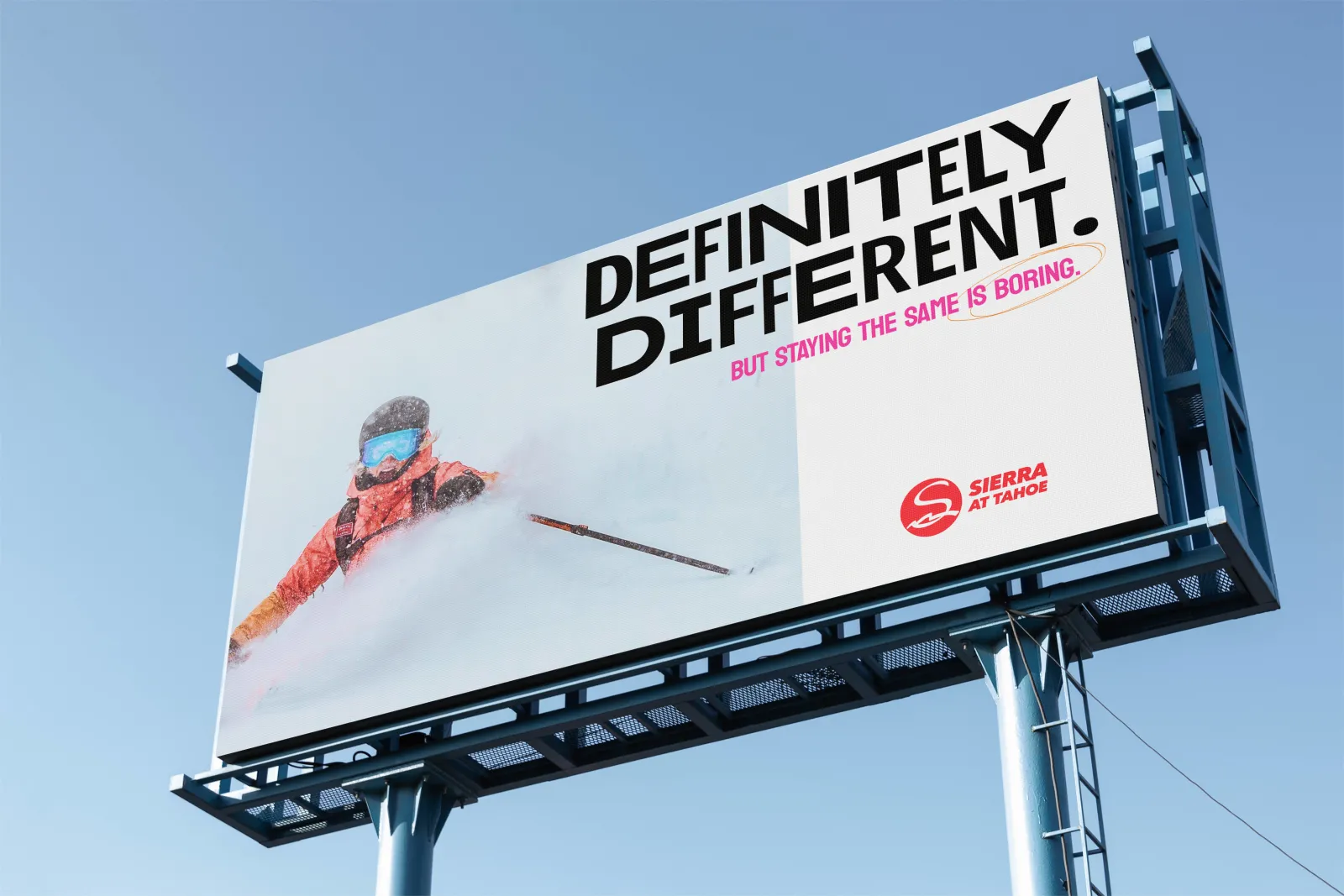How to brief your agency partner
If you’re on a brand team that’s made the decision to outsource a campaign, it can be a difficult feat articulating your needs to your chosen partner. It can be even more difficult to see a first draft of creative that you feel isn’t aligned with those needs, or that isn’t doing the work to solve your business problem/capitalize on an opportunity.
The first step to mitigating misalignment and getting the creative ball rolling on a new campaign with an agency partner is delivering a stellar brief.
Types of Briefs
Before diving into the components we love to see in a strong concepting brief, an important note is that depending on the kind of work you are partnering on, different information is needed. To help identify these differences, we bucket creative work into three categories:
- Production
- Execution
- Concepting
Production Briefs
Production briefs will mainly focus on the specs and information that are required to produce submission-ready campaign executions. These could be print ads, billboards, digital banners, the list goes on. These briefs require the level of detail needed to build creative ‘to spec’. We’re talking aspect ratios, export requirements, file size requirements, audio requirements, bleed, safe space, etc. In production briefs, information is getting granular so that when the creative leaves the agency’s hands it’s ready to hit the market.
Execution Briefs
Execution briefs are often used when the initial idea, creative look/feel or concept has been developed, but additional work is required to flesh the idea out further, either for different channels, stages of the funnel, for different audience segments, etc. Say you have developed a brand campaign but you’re struggling to weave in consideration tactics. The execution brief will give your agency partner the information needed to take the idea and drill it down further to meet your needs.
Concepting Brief
Finally, there are concepting briefs. These are the ones that produce the big ideas. Campaigns, identity work, branding and new product launches are just a few reasons to whip this brief template out for use. Concepting briefs also happen to be the hardest to write. They are briefs that force us to continue asking “why” and require us to find relevant cultural, brand and audience insights that culminate into the single-minded message.
However, no number of relevant insights will make for a strong campaign if your agency partner does not have alignment on the information needed from the brand side.
With campaign concepting being one of the most popular uses of the concepting brief that we see come across our desks, we wanted to help identify the key elements of a strong client briefing before kicking off this kind of work.
Components of a Strong Campaign Brief
Business Goal + Measurement of Success
The first, and maybe most important, components of a strong client brief are to articulate what the campaign is trying to accomplish and what success looks like. The strongest campaigns are, more often than not, only trying to achieve one thing. And that should ladder directly up to your business goal.
A clear success metric(s) should be established so that ongoing analysis can take place once the campaign is in market. It’s important to note that a combination of the success metrics and business goal are going to set the precedent for what kind of campaign will be created: awareness, consideration or tactical.
- Eg.) For a ski resort situated in a densely competitive area, they may be looking to increase market share through season’s pass sales. Success, therefore, may look like a percentage increase of pass sales from the previous season
- Eg.) For an outdoor brand that has launched a new product line, they may be looking to gain awareness for their launch. Success may be share-of-voice and a target number of gear reviews or PR hits.
When investing in a season-long or year-long campaign, it can be tempting to try and check as many business goals off the list as possible. Especially ones where the success metrics feel more tactical in nature.
It’s an important note that too many goals, like key messages, can just as easily dilute the campaign as they can give it direction. An awareness campaign that is being asked to reach a new market, extend lodging stays, get guests to plan ahead, and communicate your USP may pull the creative in so many directions that it falls flat and one clear, concise idea cannot shine through.
That is not to say that for a season-long or year-long campaign, you can not look to drive more tactical goals as well. We often work with brands on high-funnel campaigns and, once the concept has been established around the priority business goal (i.e brand awareness), it can be rolled out into other stages of the funnel to drive bookings or product sales.
Consumer Information
It’s not always feasible to provide your agency partner with the in-depth behavioural and psychographic information that drives strong consumer insights, but focusing on more than just demographics is a must. Creative agencies, unlike media agencies, need to be able to uncover deep-human truths around your audience that will help guide the creative direction. And while it is not expected that you have these ready-to-go in your brief, it’s important that there is enough audience information that the agency has a profile to work from. Beyond age, income, location or family status, it’s good to articulate what motivates the audience, what their barriers are, what brands, places or activities they are drawn to and how they perceive themselves in the context of your industry. Any nuggets of consumer info beyond geographic or demographic information will aid your agency partner in uncovering even deeper, more valuable insights.
Key Messages
Like your business goal, the key message section of the client brief should be direct, concise and focused on the main points that you want to communicate to your audience. Overloading this section with messages that extend in different directions will have the same impact as trying to check multiple, unrelated, business goals.
The key message section should focus on providing proof points that help to achieve the desired actions of the campaign.
Eg.) For a ski resort situated in a densely competitive area, they may be looking to increase market share through season’s pass sales. Success, therefore, may look like a percentage increase of pass sales from the previous season
Key messages
- Could be based on a product USP: A new terrain expansion for the 23.24 ski season will give guests access to an additional 500 acres of never-before ridden gladed trees, bowls and new lines.
- Could be based on a brand USP: For skiers and riders who want to push their progression and chase the thrill of riding expansive high-alpine terrain.
- Or could be a combination of both, if they are connected in some way.
Eg.) For a brand that has launched a new product line, they may be looking to gain awareness for their launch. Success may be share-of-voice and a target number of gear reviews or PR hits.
Key messages
- For new mothers who want to hike long distances, hikerpro is equipped with breathable material, a supportive structure and a comfortable carrier to bring your baby along for any outdoor adventure.
Deliverables
While campaign concepting briefs do not result in final deliverables, they do set the precedent for them and it’s important to know what pieces of the media plan are set in stone ahead of time. The requirements associated with video deliverables especially are important to include in these briefs where creative elements like video treatments or storyboards may need to be included in the final concepting deck.
This means that discussions with your media agency will most likely need to take place up to a year in advance of in-market dates and before your brief your creative agency partner on concepting.
Manditories, Considerations and Creative Appetite
Finally, it’s important to articulate any no-go zones for your agency, as well as additional campaign considerations and your appetite for pushing the creative.
If you’re looking for a campaign that follows your brand’s guidelines (fonts, colours, visual style) to a tee, this section of the brief is the place to make that clear. If there are considerations you would like your agency partner to take into account (what worked in previous campaigns, what didn’t), this would also be the place for that. Anything that falls outside of the information above, but that is important for your partner to know should be documented in this section.
It is also ok to acknowledge that you do not want a campaign that takes the idea to 100. While it’s your agency partner’s responsibility to push the creative envelope and present new, fresh ideas, understanding your appetite for creative disruption is important at the outset.
What to Avoid
While it’s important to have all the elements above included within your agency brief, it is just as important to avoid including a few things as well.
Knowing what campaigns, brands or creative inspires you can help your agency partner understand what gets you and your team excited.
However, trying to problem solve or provide creative solutions in the brief can be a detriment and pigeon-hole the creative process. If you’ve made the decision to onboard an agency partner to help with concepting, it’s often more successful and efficient to focus on brand information over solutions.






